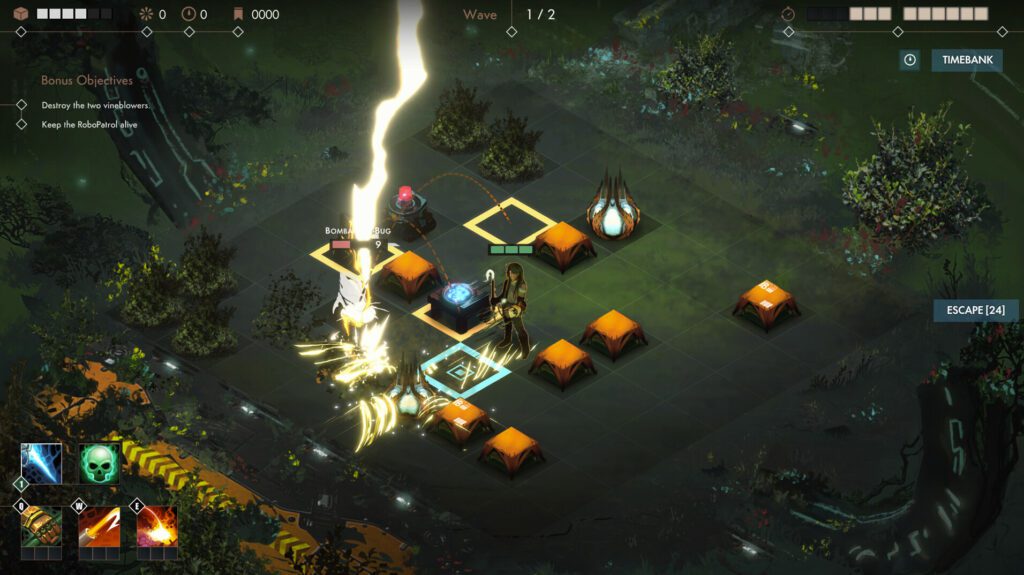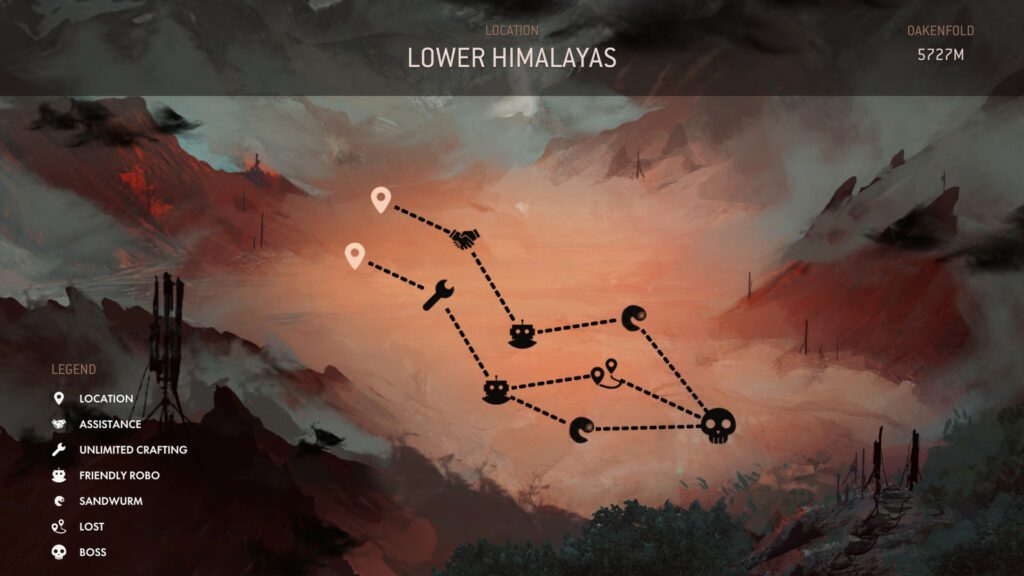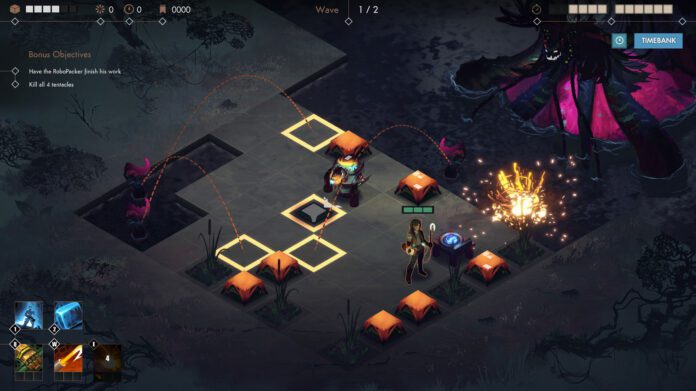I position my agile Asha to unleash a flying knee assault on a bug enemy in order to kill him before obtaining his power crystal. I then go one square and backstab another opponent, ensuring sure his strike does not hit a valuable crate. I then go stand on an enemy spawn site, which hurts me but means I’ll have fewer opponents to contend with during the next wave. I save my leftover movements to give my character additional options later in the game.
The character starts up the next round with another flying knee move, but I discover that puts me in a horrible position.

So I utilise the TimeScrubber to rewind and look for a better solution, hoping to make the best use of my void grenade. I want to keep attackers away from the boxes as much as possible by making them attack each other. However, utilising one of the other two character archetypes may make this easier.
Rutger van Dijk created Oakenfold, with Studio Taghua handling publishing. On the PC, I used Steam to play. The game is based on time manipulation concepts, with tactics-driven features.
The story is set in a future where humanity is on the verge of annihilation. Our hero is Asha, the last hope of an expedition tasked with eradicating humanity from the world. Oakenfold is a biodome, and her launch is only possible because of the fuel-filled boxes she is guarding.
Asha has a slew of survival talents scattered across three profiles, and she’ll need to use them all to get to the biodome and ensure it makes it to space. The setting is not entirely unique, but it addresses themes such as the burden of survival and environmental catastrophe while also telling a very personal story.
The mechanics of Oakenfold will be instantly familiar to anyone who has played Into the Breach. Asha is set in a small arena with attackers who plainly state their aims, containers that she must guard, occasionally helpful robots or characters, and a variety of obstacles. She can move and use three primary powers (more can be acquired).

Players must use them and their surroundings to destroy waves of adversaries while not losing any crates. These are not tactical XCOM engagements. Oakenfold introduces battle puzzles and challenges players to solve them. This can include completing all secondary objectives and leaving a level with no health loss or even an upgrade.
Other times, it means escaping by the skin of one’s teeth, saying “good enough,” and waiting to see what the next engagement has in store. Death is permanent, and each run is produced procedurally from the ground up. The engagement kinds vary, but I’d want to see more node interactions that focus on Asha and provide critical options.
To alleviate annoyance, the game includes the previously stated TimeScrubber technology. Players can rewind time at any point to get their moves back and try out a different strategy. The system also allows you to advance time and see exactly where and why an error occurs.

An initial effort to solve a level is essentially a test. Try your hardest, but don’t get discouraged if you lose a crate or fail a secondary mission. Simply scroll the mouse wheel back in time and select when you could have a better plan to implement. Time mechanics and detailed information are an effective combination, allowing players to fail with minimum aggravation. Concentrate on one version of Asha and investigate how her abilities can be combined to deal with various situations.
Asha can also store any turns she isn’t using in the Timebank, which is clearly labelled. It will be utilised to power crafting alongside the acquired crystals, resulting in better skills. They become more important when players travel closer to the biodome and the challenge increases. The Timebank can also be used to escape from a bad situation and go on to the next task.
Oakenfold encourages players to experiment, fail, discover new approaches, and work until they achieve their ideal version of perfection. Is it a good idea to complete this level without completing the secondary objective? Should I spend the time and effort required to solve this combat puzzle perfectly?
This kind of tension appeals to me. To keep things going, the levels need to offer more variation in terms of adversaries and circumstances. There are also boss bouts, which feature some really interesting-looking foes with distinct abilities. There is also a Weekly Escape mode in the game. It encourages players to battle with the same Asha attitude and levels, pitting their talents against pals and climbing a global leaderboard.
Oakenfold is heavily influenced by the mechanics of Into the Breach, as well as parts of its style. The science fiction setting and enemies, as well as the environments in which the battles take place, appear a little generic. Asha has a little more detail, and the game is good at providing information for players to plan their moves. The soundtrack, like the fighting sounds, is a little too science fiction generic.

Conclusion
Oakenfold is a clever game that makes excellent use of TimeScrubber and the opportunity to experiment with time. The plot is not unique, and neither are the main themes. However, the gameplay is strong, and the tactical puzzles are entertaining. A component of a gamer’s brain will strive to optimise, and developers understand how to engage it
REVIEW : The Eternal Cylinder – Anniversary Update (PC)













